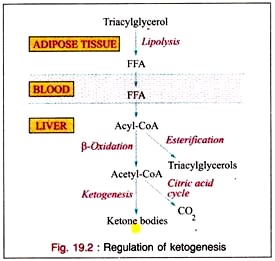The following points highlight the three classes of Pteridophytes. The classes are: 1. Psilopsida 2. Lycopsida 3. Sphenopsida.
Pteridophytes: Class # 1. Psilopsida (Psilophytes):
They are the most primitive vascular plants. Roots are absent. Instead rhizoids occur. Stem is dichotomously branched. It has two parts, aerial and rhizomatous. Aerial stems are green and photosynthetic.
Leaves may be present or absent. Sporangia develop over the aerial stem either terminally or axially. Two primitive forms found in fossil state are Cooksonia (silurian) and Rhynia (devonian). Living forms are Psilotum and Tmesipterus.
Pteridophytes: Class # 2. Lycopsida (Lycopods):
Primitive vascular plants which have differentiation of roots, stems and leaves. Leaves are microphyllous, i.e., do not produce a leaf gap in vascular strand of the stem. Sporophylls form sporangiferous spikes or strobili. Sporangia develop either axially or adaxially. Branching is dichotmous or pseudodichotmous. Examples: Lycopodium, Selaginella.
Selaginella:
It is a trailing, hanging or erect evergreen lycopod. Some species roll up in dry season to form brown balls (capitose habit) which may get uprooted and dispersed. They turn green with the availability of water.
Such species are called resurrection plants, e.g. S. bryopteris, (Sanjivani booti), S. lepidophylla. Stem is dichotomously branched in erect and hanging species, e.g., S. selaginelloides. It is monopodial pseudo dichotomous in trailing forms, e.g. S. chrysocaulos.
Leaves are simple, sessile and microphyllous. Each one bears a small scale called ligule on the basal adaxial surface. Because of it, leaves of Selaginella are called liguiate. Leaves are isophyllous and spirally arranged in subgenus Homoeophyllum having erect or hanging species, e.g., S. selaginelloides.
They are dimorphic forming four rows in opposite decussate manner in subgenus Heterophyllum, e.g., S. kraussiana. Here there are two rows of small dorsal and two rows of large lateral leaves with dorsal and lateral of one side alternating while dorsal and lateral leaves come to lie opposite at one point.
Roots are adventitious. They develop either directly from stem or at the top of a special leaflet, positively geotropic structures called rhizophores. Rhizophores are peculiar to Selaginella they develop from either base of the stem or region of stem forking’s.
Vegetative reproduction occurs by fragmentation, fleshy buds (bulbils) and tubers. Selaginella produces two types of spores, microspores and megaspores. The phenomenon is called heterospory. Their sporophylls are aggregated at the tips of stem branches to form strobili or sporangiferous spikes. Sporangia develop in the axil of sporophylls.
Megasporangia are larger, whitish or yellowish often lobed with 1—4 haploid megaspores. Microsporangia are smaller, yellowish-reddish globular-reniform structures which produce a large number of haploid microspores. Spores begin to develop precociously inside the sporangia. It is completed later on.
Seed Habit of Selaginella:
Selaginella shows traits which resemble the characteristics essential for formation of seed.
They are collectively called seed habit of Selaginella:
(i) Heterospory.
(ii) Formation of two types of gametophytes, male and female.
(iii) Gametophytes are nutritionally dependent on parent sporophyte.
(iv) Gametophytes show precocious development which is also endospermic.
(v) Only one megaspore mother cell is functional.
(vi) In some species, a single megaspore develops into a megasporangium, e.g., S. monospora.
(vii) In some species, the megaspore is not shed but develops completely inside partially opened megasporangia, e.g., S. apus, S. rupestris. Microspores reach there and form male gametophyte. Fertilization and development of embryo also occur there. However, seed formation does not occur
(viii) In S. yemensis the megasporangium is surrounded by integument.
Pteridophytes: Class # 3. Sphenopsida (Horsetails):
Stem is jointed and ribbed with leaves and branches borne in whorls. Sporangia develop on peltate sporangiophores aggregated into terminal strobili. Plants are homosporous. Spermatozoids are multiflagellate. One living genus called Equisetum.
Equisetum:
Plant body is differentiated into stem, leaves and roots. Height is from a few centimetres to several metres. Stem has two components, underground rhizome and upright aerial branches. Stems are jointed. Internodes possess longitudinal ridges or ribs and hollow interiors.
Nodes possess a whorl of scale leaves. Function of photosynthesis is carried out by green aerial stem branches. Intercalary meristem occurs above the nodes. In rhizome some of the branch primordia develop into tubers, e.g. E. arvense. Due to presence of intercalary meristems, intemodes can be easily pulled out as pipes.
Adventitious roots develop in whorls over the nodes of rhizome. Xylem has xylem vessels. Aerial branches develop terminal strobili. In E. arvense, there are two types of aerial branches, green sterile and brown fertile. Terminal strobili occur only on fertile branches.

